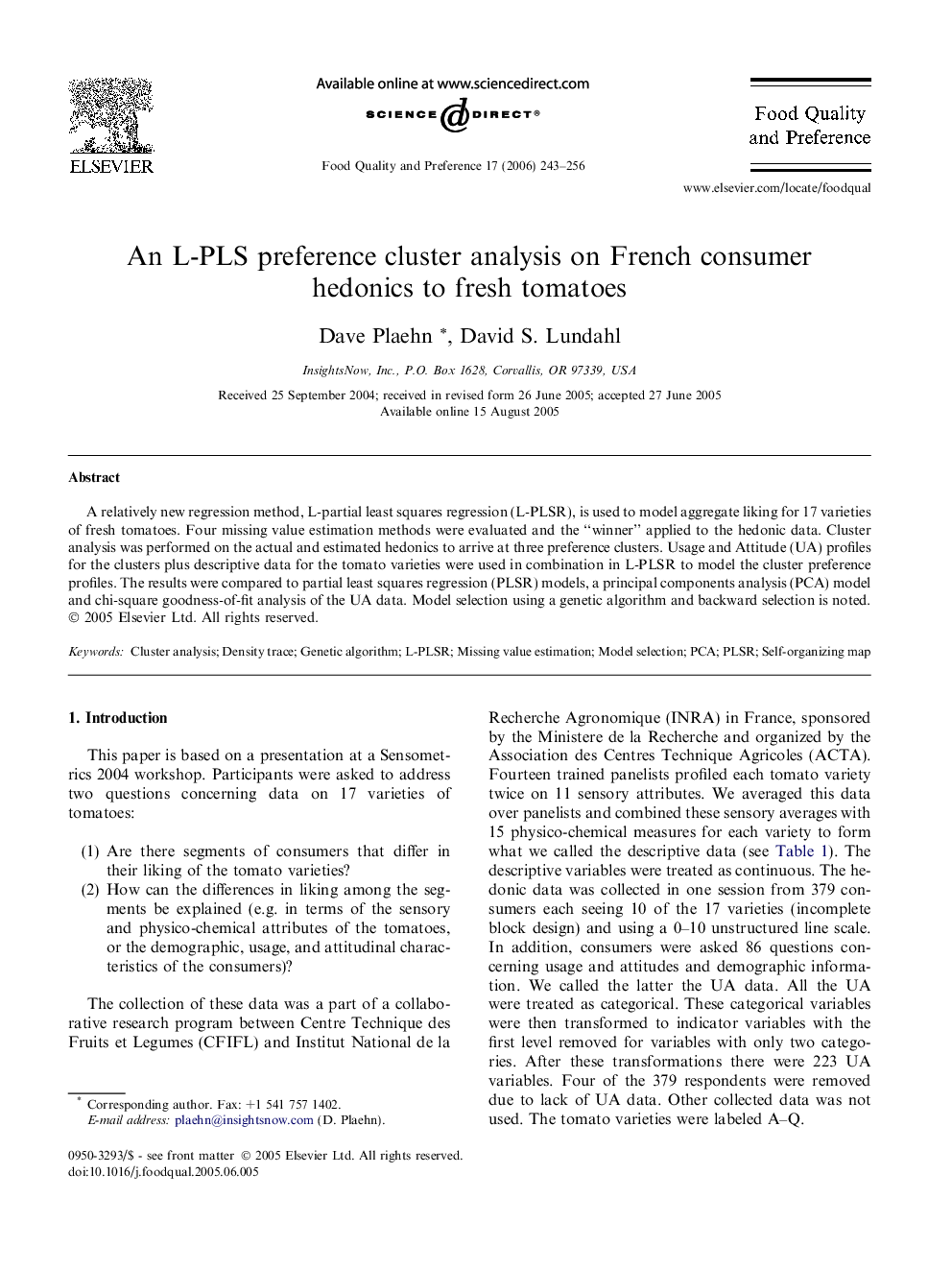| Article ID | Journal | Published Year | Pages | File Type |
|---|---|---|---|---|
| 4318288 | Food Quality and Preference | 2006 | 14 Pages |
A relatively new regression method, L-partial least squares regression (L-PLSR), is used to model aggregate liking for 17 varieties of fresh tomatoes. Four missing value estimation methods were evaluated and the “winner” applied to the hedonic data. Cluster analysis was performed on the actual and estimated hedonics to arrive at three preference clusters. Usage and Attitude (UA) profiles for the clusters plus descriptive data for the tomato varieties were used in combination in L-PLSR to model the cluster preference profiles. The results were compared to partial least squares regression (PLSR) models, a principal components analysis (PCA) model and chi-square goodness-of-fit analysis of the UA data. Model selection using a genetic algorithm and backward selection is noted.
